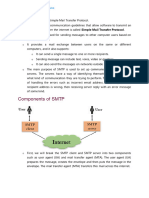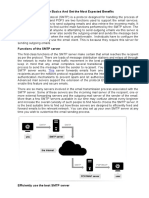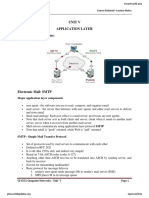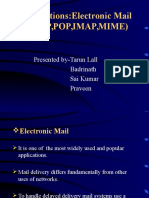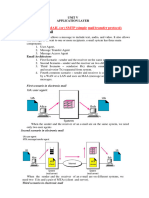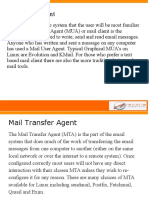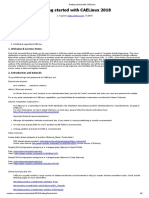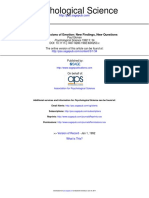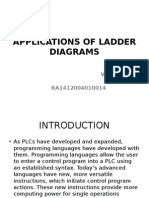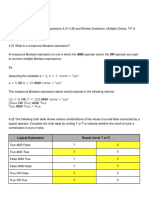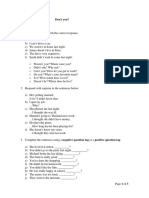0% found this document useful (0 votes)
26 views6 pagesUnit5 Net
Simple Mail Transfer Protocol (SMTP) is a crucial application layer protocol for email exchange between servers, operating primarily over TCP port 25. It supports two delivery methods: end-to-end and store-and-forward, with various components like Mail User Agent (MUA) and Mail Transfer Agent (MTA) facilitating the process. SMTP.com offers affordable email delivery services with features like 24/7 customer support and high volume sending solutions, catering to diverse business needs.
Uploaded by
spreeti720Copyright
© © All Rights Reserved
We take content rights seriously. If you suspect this is your content, claim it here.
Available Formats
Download as DOCX, PDF, TXT or read online on Scribd
0% found this document useful (0 votes)
26 views6 pagesUnit5 Net
Simple Mail Transfer Protocol (SMTP) is a crucial application layer protocol for email exchange between servers, operating primarily over TCP port 25. It supports two delivery methods: end-to-end and store-and-forward, with various components like Mail User Agent (MUA) and Mail Transfer Agent (MTA) facilitating the process. SMTP.com offers affordable email delivery services with features like 24/7 customer support and high volume sending solutions, catering to diverse business needs.
Uploaded by
spreeti720Copyright
© © All Rights Reserved
We take content rights seriously. If you suspect this is your content, claim it here.
Available Formats
Download as DOCX, PDF, TXT or read online on Scribd
/ 6














